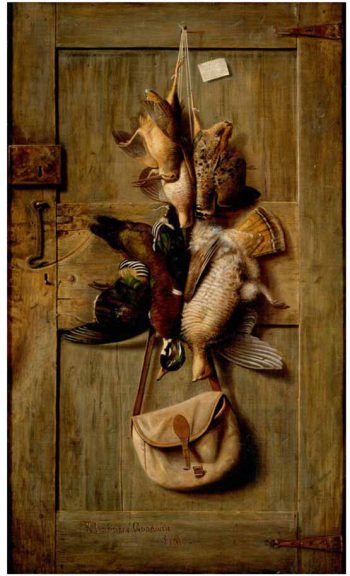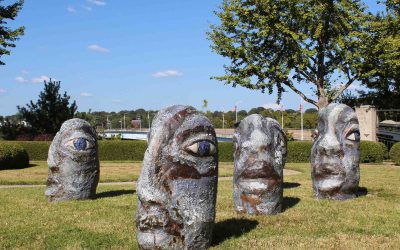First, the Mansion
The bluff on the south bank of the Tennessee River, now home to the Bluff View Art District, was once a perch for an iron smelting plant. Bluff Furnace, built by Robert Cravens, took local iron ore and turned it into raw iron. In 1860, its second blast failed due to structural problems in the hearth. The furnace closed, and during the Civil War, much of the machinery was dismantled and the site was destroyed.
In the early 1900s, the property took its first steps toward becoming the Hunter Museum of American Art. A local insurance broker built the mansion on site. The building was designed by the architecture firm Mead and Garfield, Abram Garfield being the son of James Garfield, who served as U.S. President in 1881. In 1920, Anne Taylor Thomas, widow of a Coca-Cola bottling pioneer, bought the home. Her nephew, George Thomas Hunter, had relocated to Chattanooga to work at Coca-Cola, eventually becoming CEO and one of the Scenic City’s great philanthropists. When Hunter died in 1950, the Chattanooga Art Association requested that the mansion be used for a museum.
The George Thomas Hunter Gallery of Art opened on July 12, 1952. Its first acquisition: a Richard LeBarre Goodwin painting called “The Huntsman’s Door,” which had been on display at a local jewelry store for years.
Additions and renovations on the bluff since have sculpted the museum into what it is today. The east wing was built in 1975 in an architectural style known as Brutalism. Thirty years later, the waterfront building, located closest to the Walnut Street Walking Bridge, added 28,000 square feet.
Today the Hunter Museum of American Art’s permanent collection celebrates the stories of American art from the 1700s to present day. It is home to 520 paintings, 212 sculptures, 161 decorative art objects, 73 pieces of mixed media, and more than 1,400 works on paper. Temporary exhibitions this spring include Tennessee Triennial–a contemporary gallery that speaks to the healing of communities, bodies, and relationships (through May 27)–and Really Free: The Radical Art of Nellie Mae Rowe (through May 1).
Photos credits: B/W historical photos of house : Courtesy of ChattanoogaHistory.com


Recent Articles
River Gallery Sculpture Garden: Recognized Excellence
Recognized Excellence High atop a bluff overlooking the Tennessee River you will find River Gallery Sculpture Garden located in the beautiful Bluff View Art District and situated along the coveted Chattanooga Riverwalk. River Gallery Sculpture Garden first opened in...
Soaring Artistry
From a child’s first kite at the beach to the 20-foot flying art-pieces that will take the air this April at Chattanooga’s Montague Park, kites have always set flight the imagination of children and adults alike. This spring in Chattanooga, don’t miss the chance to...
Blue Whales: Return of the Giants 3D
Return of the Giants 3D Blue Whales 3D narrated by Award-Winning actor Andy Serkis, takes viewers on a journey of a lifetime to explore the world of the magnificent blue whale, a species rebounding from the brink of extinction. Blue whales are the largest animals ever...




